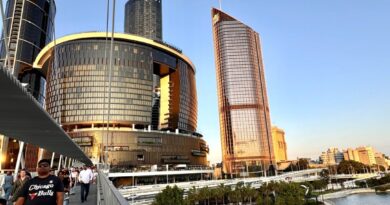BC 2025 Budget Slashes Spending, Predicts $11 Billion Deficit Due to Imposition of US Tariffs
“This is not about doing less,” she said.
The province is setting aside $4 billion in its annual contingency fund for “unpredictable costs,” including the impact of U.S. tariffs, which could reduce provincial revenue by up to $3.4 billion per year, according to the budget.
In addition to countermeasures, the province says it plans to diversify its trade markets and expedite projects to create more jobs.
Spending Cuts and Deficit
The province projects expenses of $94.9 billion in 2025–2026, which it says will support programs and services residents rely on, while “helping people with costs and building a stronger economy.” Revenue is projected to reach $84 billion and expected to increase over the following two years due to higher tax revenues from population growth, economic activity, and increased natural resource revenues.
Meanwhile, this fiscal year’s deficit is projected at $10.9 billion, nearly $2 billion higher than last fiscal year’s updated shortfall of $9.1 billion. However, the deficit is projected to decrease over the following two years but will remain above last year’s level.
The province plans to cut spending by reviewing all government programs, pausing public service hiring, and reducing non-essential administrative and operational costs, including travel, consulting contracts, and business expenses. “With the uncertainty we’re facing due to international threats to our economy, it’s important that we take a close look at our spending,” Bailey said in her budget address.
Those measures would cut spending by $300 million in the 2025–2026 fiscal year, and by double that amount in each of the following two years, according to the budget.
Taxpayer-supported debt is estimated to reach nearly $119 billion in the 2025–2026 fiscal year, an increase of more than $20 billion from last year.
B.C. Opposition Conservative Leader John Rustad criticized the budget, arguing it provides neither significant tax relief for residents nor a “substantive plan on tariffs” or measures to address interprovincial trade barriers, all while running a “record setting deficit” and raising B.C.’s carbon tax.
Health and Education
The budget earmarks $4.2 billion over three years to increase capacity in the health system, and an additional $15.5 billion in capital investments for new health facilities over the same period. Meanwhile, mental health and addiction services will receive $500 million in funding, also over three years, for addictions treatment and recovery programs, the province says.
Investments in kindergarten to Grade 12 education amount to $370 million over three years, with capital investments of $4.6 billion over the same period. Post-secondary education and skills training will receive slightly larger funding at more than $700 million over three years, with a capital funding of $4.7 billion.
The province is also allocating $36 million toward “critical language preservation and revitalization” to meet what it describes as a growing demand for First Nations language instruction
“as well as support learners and jobs for expert speakers, particularly Elders and First Nations women.” The funding is part of a $45 million investment over three years for the First Peoples’ Cultural Council.



